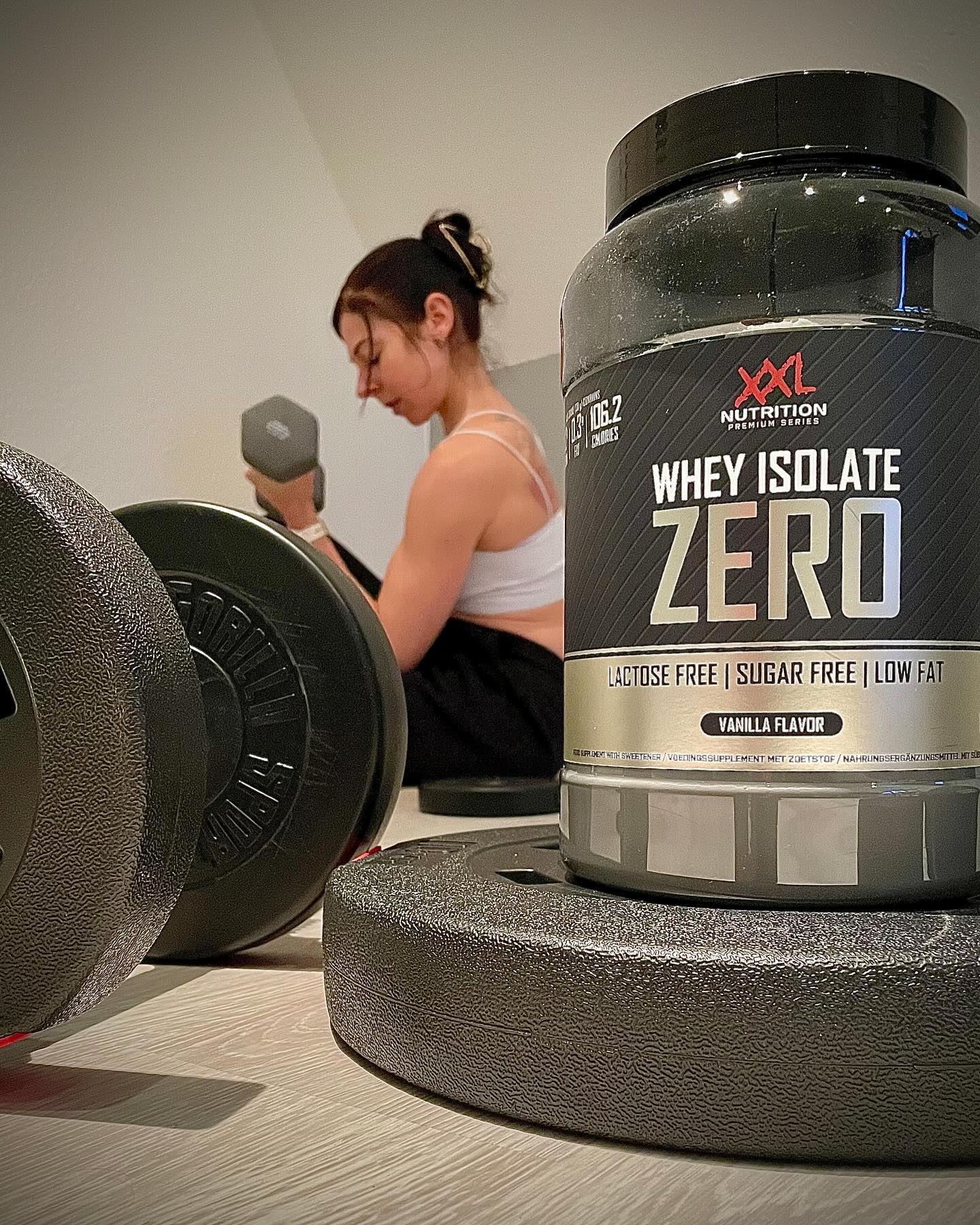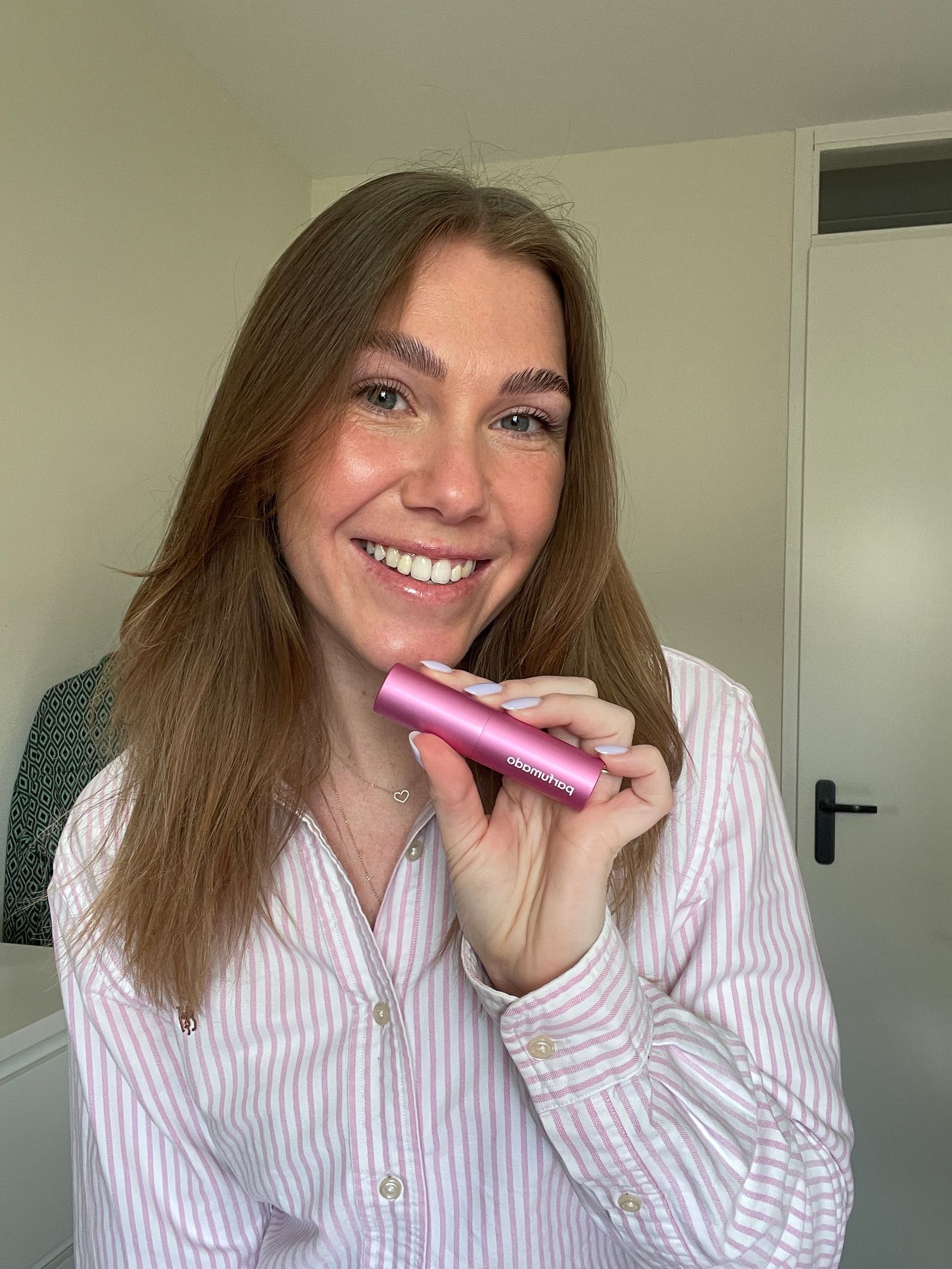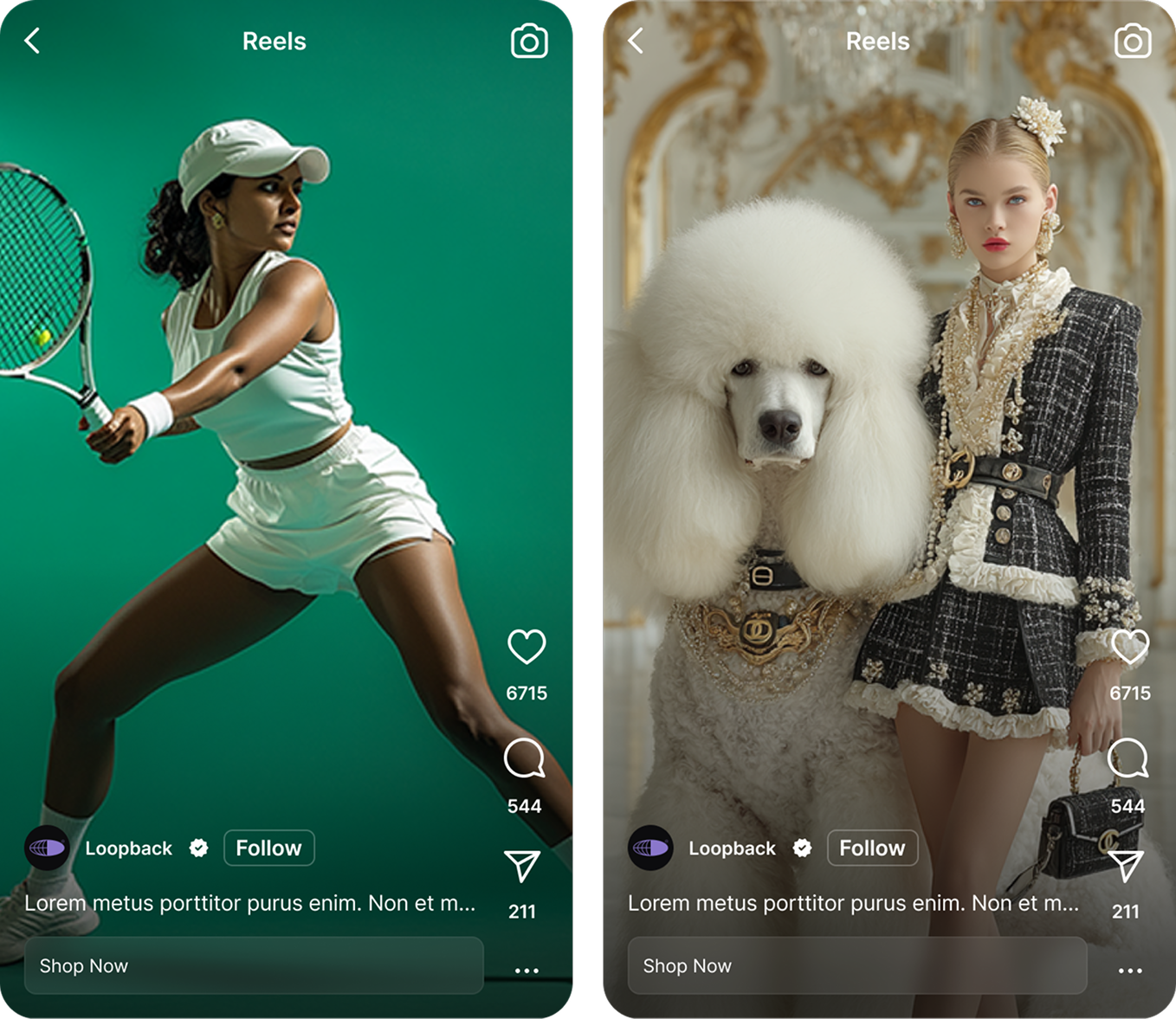Facebook Creator Marketplace Launch: What DTC Performance Marketers Need to Know

The Creator Performance Era: We Called It. Facebook Validates It.
Disruption doesn’t wait for consensus. When The Cirqle began architecting performance-driven creator strategies, the market was still stuck in the vanity metrics age - grappling with likes, reach, and ambiguous “influence.” We called that dead on arrival. We built the measurement engines and frameworks that turned creators into hard-driving growth levers, not brand awareness fluff. Today, with Facebook rolling out its Creator Marketplace, the world’s largest social platform is finally conceding what we knew years ago: scalable, systematic, quantified creator performance is now the law of the land.
This is the turning point performance marketers warned legacy influencer platforms about. Facebook rarely pivots without overwhelming demand. Its move is a direct industry endorsement that only creator initiatives engineered for attribution, cost per acquisition, and full-funnel impact have a future. If Facebook thinks in terms of performance, you can bet mainstream adoption (and serious budget allocation) will follow fast. In plain terms: we’re witnessing the global productization of what The Cirqle pioneered.
What most DTC brands get wrong is still trusting the influencer “rolodex” model - relying on one-off brand deals and subjective fit. That’s playing chess blindfolded. The performance era demands attribution, channel fit, and an ROI accountability loop. Facebook’s marketplace isn’t just matching brands with creators; it’s aligning incentives, accelerating measurement innovations, and ultimately forcing every campaign to prove its business case.
Why does this matter now? Today’s top DTC marketers know that customer acquisition costs are relentless and that creative fatigue hits faster than ever. Static creative libraries can’t keep up. Creator performance ecosystems (where the right voices are deployed, refined, and scaled based on transaction data) are now table stakes. With Facebook entering the arena, the message couldn’t be clearer: the era of “inspiration” is over; it’s time for influence that moves product. Stand still, and you’ll be trampled by those who demand accountability in every creator dollar spent.
For every ecommerce or DTC marketer: Facebook’s signal isn’t a trend, it’s a permanent market reset. The winners will be those who retire legacy influencer approaches and adopt creator performance playbooks - with technology, real attribution, and agile scaling at the core. The future already arrived at The Cirqle. Now, the rest of the industry is playing catch-up.
Decoding Facebook Creator Marketplace: Core Mechanics & Features
Most DTC marketers have been forced to stitch together creator relationships, audience insights, and campaign execution across scattered platforms, with each step introducing drop-off and missed opportunities. Facebook’s Creator Marketplace aims to end this fragmentation, arming brands with closed-loop control from discovery to post-campaign analytics - right inside the ecosystem where your audience already lives.
Onboarding in the Marketplace is ruthlessly streamlined. Creators are vetted by Facebook before joining, dramatically reducing the risks of bots, fraud, or underperforming profiles. For brands, onboarding starts with clear campaign objectives, budgets, and audience targets. The Marketplace then algorithmically matches brands with creators whose audience profiles, engagement metrics, and historical performance best align to your growth priorities - using granular data that only Meta can provide. You move from manual hunting to automated, data-backed matchmaking.
Advanced audience targeting is the Marketplace’s lifelong moat. Unlike surface-level demographic filters of open networks, Facebook lets brands drill into shared psychographics, buying intent, and behavioral affinities. This signals a hard pivot from “reach” to relevance - ensuring your spend is delivered by creators whose followers are primed and primed to convert, not just scroll.
Seamless integration with Facebook Ads Manager is the anti-friction breakthrough most brands underestimate. You can boost creator content as paid ads, retarget engaged viewers, and A/B test on the fly - all without exporting creative assets or wrangling with clunky UTM tracking from third parties. From briefing through performance reporting, workflow happens within a unified interface, collapsing process complexity and accelerating speed to market.
Content rights and usage? Negotiated natively. Facebook embeds standardized rights management, making it simple for brands to repurpose high-performing creator assets across multiple placements with clear terms. This minimizes legal ambiguity and unlocks more value from every collaboration.
Performance analytics are built into the fabric of the Marketplace, giving real-time metrics on reach, engagement, and conversion down to the asset and creator level. Compare this to open influencer platforms or legacy agency models, where latency, guesswork, and incomplete attribution are the norm.
In short, Facebook Creator Marketplace isn’t just an alternative - it’s a categorical elevation. Brands move from fragmented, high-touch chaos to a closed, performance-driven ecosystem where wasted spend and operational drag are engineered out by design.
The Paid Amplification Funnel: Scaling Creator Content into High-ROI Ads
The real breakthrough with Facebook’s Creator Marketplace isn’t just getting access to creators - it’s the ability to weaponize authentic content at scale through paid amplification. Most brands make the classic mistake: they view creator content purely as organic, letting strong creative die on the vine. The high-leverage move is building a performance funnel where the best of creator-made assets are rigorously tested, iterated, and spun up as high-ROI ads.
Workflow is everything. Start by sourcing creators inside Facebook’s Creator Marketplace, prioritizing those with a proven ability to craft content that directly influences purchase decisions. Once you’ve established clear formats and calls to action, facilitate collaboration on specific briefs - think conversion-driven UGC and unboxing, not vague “brand awareness” fluff.
When you receive the assets, resist the urge to go straight to post - the magic unlock comes from integrating creator content into your paid ad stack, not your organic feed. Move top-performing creator assets into paid campaign sandboxes inside Meta Ads Manager. Here’s where most brands get it wrong: organic posts live and die on follower reach and fleeting engagement, but creator-powered whitelisted ads (via “Paid Partnership” tags or direct dark posting) allow you to hyper-target audiences, edit hooks, iterate copy, and optimize delivery based on first-party platform data. Brand-owned ads masquerading as creator content reliably outperform both native posts and traditional static ads because they fuse credibility with performance levers.
Treat creator content like any other campaign asset in your performance arsenal. Test aggressively. Spin up micro-budgets across 4-6 creator variants in your target demo, then let the data speak. Double down on the winners with budget and a refresh loop, reallocating spend in near real time. A disciplined amplification process means poor-performing content gets cut instantly, while high-ROI creator ads get scaled with ruthless focus.
Here’s your playbook: Brief with intent, vet for conversion potential, test via dark posts, analyze by granular metrics (ROAS, CPA, thumbstop), and only then scale. In the Creator Performance Era, organic reach is just the starting pistol - the finish line is turning social proof into sales at paid-media velocity.
Common Pitfalls: What Most Brands Still Get Wrong About Creator Marketplaces
Chasing follower counts is one of the most expensive rookie mistakes in the creator marketplace game. Too many DTC brands assume that bigger creators guarantee bigger ROI. In reality, audience quality, creative fit, and platform-native engagement drive conversions - while inflated follower numbers are often a red herring. Even where CPMs look reasonable, actual purchase intent can crater if you’re not attentive to the creator’s real influence on your buyer cohort. The most efficient DTC teams focus on “conversion-per-dollar” benchmarks, not just creator reach.
Second, whitelisting and paid amplification are still shockingly underused. Most brands leave control (and efficiency) on the table by treating creator content as organic-only assets. If you don’t whitelist and take over the levers, you will never scale performance. Running paid ads from creator handles unlocks access to richer audience targeting, optimizable A/B tests, and multiplies content lifespan. It’s not merely a bonus; it is foundational. If a creator can’t or won’t whitelist, look elsewhere.
Content iteration is the lifeblood of performance, yet brands underplay the role of structured creative testing. Launching a single campaign and expecting magic is a shortcut to wasted spend. The smart move: treat every creator asset as an A/B testable input, then systematically tweak the offer, hook, and visual based on conversion metrics. DTC teams that dominate understand that sequential iteration (two, three, four creative rounds) unlocks a compounding effect. Creator marketplaces only multiply this leverage if you design for iteration, not one-off bursts.
Short-term thinking is another recurring failure. One-off posts break the learning loop and sabotage efficiency. If you want true scale, don’t just hire creators; build repeatable flywheels. Structure always-on partnerships. Negotiate usage rights upfront for retargeting. Incentivize creators with escalating rewards to keep them in your ecosystem. The repeatable flywheel beats one-hit-wonders every time.
Most damaging: treating Instagram, Reels, and other platform placements as silos. Cohesive DTC execution demands you activate cross-channel synergies. The best teams coordinate campaigns to cross-pollinate audiences, maximize retargeting pools, and reinforce messaging across touchpoints. Run influencer-led video on Reels, seed the same offer on Stories, and amplify winning assets via paid in-feed on Facebook - all orchestrated in unison.
Practical imperatives: 1) Prioritize conversion metrics over vanity reach, 2) Whitelist creators and always amplify top content via paid, 3) Embrace a test-and-iterate mindset for every asset, 4) Build long-term partnerships for flywheel efficiency, and 5) Architect campaigns to leverage cross-channel execution. Treat these as non-negotiables if you want to win the Creator Performance Era.
Proven Frameworks: Architecting Repeatable, Data-Backed Growth
With Ads Creation with Influencers, The Cirqle lets you launch paid partnership ads with vetted creators in seconds, all inside the platform. Automate permissions, streamline approvals, and preview safe zones before going live to eliminate workflow bottlenecks. Learn how it works and cut operational drag so your team can focus on scaling high-performing creator ads instead of admin.

If you’re not deploying a disciplined testing-to-scale methodology with Facebook Creator Marketplace, you’re playing slots instead of building a growth engine. Here’s the high-yield framework you need: phased, data-driven, and designed for compounding results.
Start by running high-velocity tests with diverse creators and angles - 15 to 25 micro-influencers are the sweet spot for initial signal gathering. Select for content style, audience overlap, and creative risk. Most brands fail by spreading budget too thin or picking creators based on “vibe” alone. You need broad variation but clear hypotheses. Treat each creator as a media placement, not a branding exercise.
In the test phase, instrument everything for measurement: structured UTM codes, pixel events, and unique offers per creator. Results should be evaluated by hard performance (cost per acquisition, ROAS, retention by cohort) not just vanity views or engagement. Ditch the campaign “recap slides” and build live dashboards that let you pivot spend in real-time, pausing underperformers within days.
Optimization starts on day one, not at the end of the campaign. Tighten your feedback loops: run weekly creative reviews, feed winning insights back into new briefs, and consolidate media spend towards the top 20 percent of creator-ad combinations. Creators whose content consistently outperform should be moved into exclusive or Ambassador agreements. Reward based on ROI, not reach.
First-party data is your moat. Use purchase history, site behavior, and CRM attributes to custom-match creators’ audiences to your best customer personas. Where most brands lazily rely on lookalike audiences, you should design creative and targeting that directly appeals to sub-segments you know are high-value. The Cirqle’s partners are integrating Shopify and pixel data with Facebook’s new creator audience filters to collapse discovery and conversion in one cycle.
Don’t skimp on the briefing and approval process. Precision breeds performance. Provide crisp reference content, script guardrails (while allowing for authentic voice), and mandatory CTAs. Set clear review deadlines - creators who deliver late or off-brief bleed velocity from your test cycles.
Real results prove the model: Last quarter, a DTC beauty brand using The Cirqle’s marketplace-tested framework saw a 33 percent lift in CAC efficiency when doubling down on their top five percent of creator ads and feeding first-party buyer data directly into creative targeting. The takeaway: repeatable growth is never an accident. It’s engineered from day one, by design, not hope.
Case Study Snapshots: Brands Winning with Performance-Driven Creator Marketing
Case in point. XXL Nutrition, the top sports nutrition brand in the Netherlands and Belgium, tapped The Cirqle to break into the German market - not with spray-and-pray influencer spending, but with a data-driven performance model. XXL Nutrition leveraged The Cirqle’s platform to replicate their local influencer playbook at scale, automating creator discovery and compensation for attributed outcomes. The result: faster, frictionless market entry and measurable channel lift. By deploying The Cirqle, XXL Nutrition transformed influencer marketing from an awareness lever into a performance channel that drove real market penetration, all while reducing manual overhead and ensuring high-caliber creator partnerships.

Case in point. Parfumado broke from conventional influencer spend by tying creator compensation directly to sales, not just “reach” - and the payoff was immediate. Plugging into The Cirqle’s platform, they rapidly deployed paid partnership ads with full-funnel attribution. The result: a 20% drop in customer acquisition cost in the first month, with 560,000 impressions and 2,000 clicks flowing through a streamlined creator activation. Scaling spend became frictionless. For performance marketers, this isn’t theory - it’s a blueprint for channel diversification that drives down acquisition costs without sacrificing scale.

Every performance marketer talks creative attributions, but here’s where the best actually deliver: direct, measurable revenue outcomes. Let’s dissect how two DTC challengers used The Cirqle’s platform to outmaneuver the typical “influencer awareness” playbook and unlock scalable growth - less hype, more results.
First, consider Heist, a fast-scaling DTC apparel brand. Instead of paying for borrowed reach or “influencer posts,” Heist switched to a pure performance structure - compensating creators for quantifiable conversions, not vanity metrics. Using The Cirqle’s real-time attribution suite, Heist deployed dozens of micro and mid-tier creators, each tracked to attributed sales. The result: the brand recorded a significant drop in acquisition costs, outperforming their Facebook retargeting benchmarks, and cycling creative at a pace unrivaled by internal teams. Notably, creators who were paid per sale became true partners, not just sporadic content suppliers, which drove 30%+ higher retention rates among acquired customers [see The Cirqle’s Heist case study].
Second, a leading specialty beauty brand (call it Brand X) hunted for growth without burning cash on uncertain CPMs. They activated performance-based creator campaigns mapped directly to last-click revenue using The Cirqle’s closed-loop platform. Instead of sponsoring top-heavy mega-influencers, Brand X split budget across high-converting micro creators. This approach slashed their blended CPA and surfaced a set of creators with sustained repeat purchase impact, outperforming traditional affiliate and sponsored post tactics [see The Cirqle’s beauty case studies].
The core learning threads are clear: pay creators on performance, not promise. Deploy always-on tracking and incentivization at scale. And use emerging tools like Facebook Creator Marketplace to amplify transparency and optimize in real time. These mechanisms aren’t “nice to haves” - they’re the new baseline for DTC marketers who want creator marketing that proves out on a P&L. When you stop treating creators as a media buy and unlock them as a performance channel, results compound.
What Comes Next: Building Advantage in the Era of Creator Marketplaces
Early adopters win - not by moving fastest, but by learning fastest. Brands that get onto Facebook Creator Marketplace now will compound performance advantages quarter over quarter. You’ll lock in access to niche creators before rates normalize, identify winning creative angles, and get visibility into what actually drives incremental revenue while rivals are still figuring out workflows. This “insight monopoly” is the new cost arbitrage; you’re building a data asset the competition can’t copy with cash alone.
The smart move isn’t to wait for a playbook, it’s to write your own. Stand up agile test-and-learn sprints with creators across segments and campaign types. Codify what variables move the needle for your category: creator tier, format, ad stack, incentive models. Ruthlessly document learnings and operationalize them into a modular test matrix. Don’t get distracted by pure volume - focus on the repeatable combinations that outperform and scale with confidence.
Future-proofing creator programs requires discipline many DTC teams don’t have yet. Formalize frameworks for performance attribution: last-click, post-exposure, and incrementality. Build direct integrations to unify reporting from Creator Marketplace, your ad platforms, and on-site sales data - manual patchwork is already obsolete. Standardize creative briefs to empower creators without stifling authenticity. Systematize feedback loops so learnings feed back into briefs, not just reports.
For in-house teams, this means upskilling fast in cross-functional collaboration. Your media buying, creative, influencer, and data science leads must operate on a single operating system. Traditional influencer managers thinking in “reach” are now a liability; the new power seat is “creator performance operations.”
A word for agency partnerships: select only those with bottom-funnel accountability. Mere roster access or negotiation is commoditized. Agencies must now deliver speed, process rigor, and closed-loop analytics, or they’re dead weight.
Above all, enforce operational discipline. The Creator Marketplace era will reward brands that connect execution to insights and unlock economies of learning, not just spend. Holistic measurement (cross-platform, multi-touch, incrementally validated) is the north star. The brands that institutionalize this mindset now will run laps around the field as creator marketplaces inevitably become the new paid social. Winners won’t have the most creators; they’ll have the sharpest playbook and the fastest feedback loop.
Get started with The Cirqle today.
Give your team the power and speed they need to find the right partners and grow your brand.
%201.avif)






